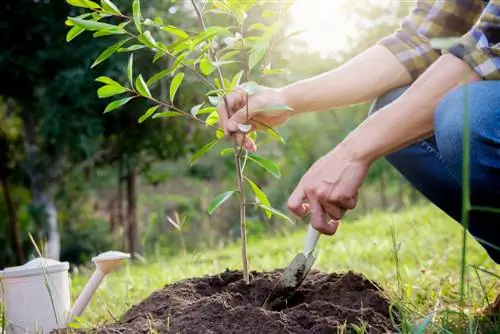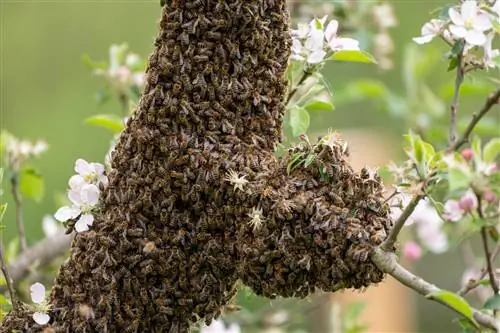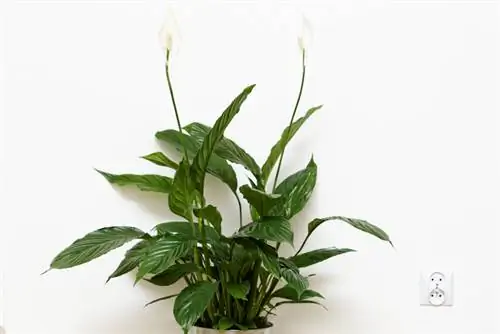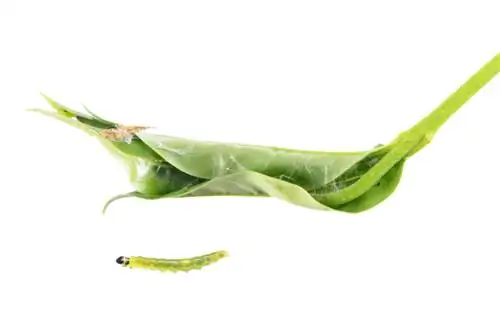- Author admin [email protected].
- Public 2023-12-16 16:46.
- Last modified 2025-06-01 06:02.
Whether it’s a fruit tree, a deciduous tree or a conifer - there’s a tree in every garden! Not only does the wood structure a garden space and provide clean air, it is also a valuable habitat for many animals. In addition to insects, small animals such as birds, hedgehogs and lizards also find hiding places and food here. If you only have a small garden, you have a large selection of numerous trees that remain small.

How do you plant a tree correctly?
When planting a tree, loosen the soil, dig a sufficiently large planting pit and plant the tree at the appropriate depth. Protect the tree with a planting stake, water generously and prune the crown to promote he althy growth.
Choosing the tree
Before planting, you first have to choose a suitable tree, although you cannot plant just any species in your garden. In addition to personal preferences, these criteria also determine the suitability or unsuitability of the desired tree species for the intended location:
- Size of the planting area and expected size of the tree
- Proximity and species to other plants
- Site conditions and brightness
- Soil texture
- desired use
In particular, the available space, the brightness of the location and the condition of the soil are immensely important factors as to whether the tree planted there can grow he althily. Large trees such as oaks, chestnuts, pines, etc. need a lot of space and therefore belong in a large garden - as do most standard fruit trees. Sun lovers should not be planted in the shade and wetland plants (such as alders or rhododendrons) should not be planted in dry, sandy soil.
The right season
Container plants can generally be planted all year round as long as the ground is not frozen. However, planting in autumn or spring is recommended, as freshly planted young trees require a lot of water and can therefore dry out quickly if planted during the hot summer months. Bare-rooted trees, on the other hand, are only planted in the ground when there is little vegetation.
Necessary preparations
According to the location, tree species and season, you can now finally start planting. Before that, however, the soil must first be thoroughly loosened. If you have purchased a shallow-rooted plant, you must dig up a large area of the planting area and crumble the soil thoroughly. Deep-rooted plants, on the other hand, require deep soil cultivation so that their roots can grow unhindered. These measures are particularly important in heavily compacted soil, which is often found in newly built houses. However, caution is also advised with older gardens: many people have already found buried building rubble and other waste that needs to be removed. Afterwards, it is often necessary to replace the floor, for example if asbestos has been buried.
Planting a tree - instructions
Before planting directly, you should place the tree in a bucket of water so that its roots can soak up water. Meanwhile, do the preparatory work and dig the planting pit.
Digging the planting pit
Use a spade to dig out the planting pit, which should be about twice as large as the root ball of the tree to be planted. Thoroughly loosen the bottom and walls of the pit using a suitable tool, such as a claw or hoe. Mix the excavated material with a generous shovelful of compost and a generous handful of horn shavings and fill some of it into the pit.
Inserting the plant stake
Now drive the planting stake into the edge of the pit. This serves to stabilize the tree and ensures that it is not knocked over again with the first gust of wind. Cutting down the tree after planting does not make sense, as its roots can be accidentally damaged - with the result that growth suffers and certain diseases can occur, for example due to fungal infections.
Planting the tree
Now place the tree in the planting pit. Plant it exactly as deep as it was in the nursery or container. You can tell the planting depth by the darker coloring of the trunk. With grafted trees, first look at where the grafting is located. If the grafting point is at the root collar, you should plant the tree so that it is at least ten centimeters above the ground. Otherwise, either the rootstock or scion can take root from it, so that the desired growth characteristics determined by the rootstock are lost. Fill in the substrate and gently tamp it down. Tie the tree to the post, if possible with a ribbon made of raffia or coconut fiber. The rope is looped around the tree and pole in figure eights, but the trunk must not be constricted.
Don’t forget to water and fertilize
Freshly planted trees need a lot of water. Therefore, form a watering edge along the planting pit and around the trunk so that a trough is created. Fill this well with water, which will gradually seep into the ground. Then mulch the tree disc with bark mulch, grass clippings or similar materials so that the moisture remains in the ground and does not evaporate. If there are longer breaks in the rain, you should water the young tree additionally.
Plant cutting
Since roots are always destroyed or cut when planting, creating an imbalance between the above- and below-ground parts of the tree, you must cut back the crown accordingly. Otherwise, the remaining roots would no longer be able to adequately supply the crown, so that the tree would partially dry out. The type and extent of pruning depends on the tree species and its intended use. Fruit trees, for example, are pruned differently than ornamental trees in order to promote the development of fruit wood.
Tip
Choose native tree species if possible, as their ecological value for the entire environment is significantly higher than imported trees, which native insects and birds cannot do with.






